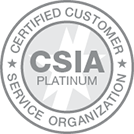With a combination of strategic leadership, partnership, and hard work, board presidents bring organizations to greater heights
At any organization, it’s essential to have capable guides at the helm. In the case of non-profit associations, these guides are the board members, who are the fiduciaries who steer the organization toward a sustainable future by adopting sound, ethical, and legal governance and financial management policies, as well as by ensuring the non-profit has adequate resources to advance its mission. Because however well-intended an organization is and however beneficial its intended path, it cannot stay the course without a plan for strategic leadership.
Every role on the board of a non-profit association is meaningful, but that of the board president is perhaps the most visible. Whether acting as the spokesperson for an organization or overseeing a board vote, the president must handle a wide variety of tasks while publicly representing the organization’s vision and values.
What It Takes to Be President
For anyone exploring the possibility of putting themselves forward for the role of board president, or simply seeking to better understand the responsibilities and challenges faced by their organization’s president, there are numerous issues to consider. A president must wear many hats, from the lofty (like public speaking engagements) to the unglamorous (like building consensus among the board). Learning to wield such an array of skills is no minor time commitment.
“It’s difficult to juggle a day job while also being a volunteer president, because you have to put in a considerable number of hours,” said Amy Williams, CAE, MPA, IOM, Vice President of Sales and Consulting at Association Headquarters (AH). “You have to dedicate time to this role every week.”
Williams, who served a one-year term as the president of the Mid-Atlantic Society of Association Executives (MASAE), is certainly familiar with the amount of work involved in the roles. But, she pointed out, there are many benefits as well.
“Most of the time, once you’ve gotten to the point of becoming president of your organization, you’ve been in the industry for quite a while,” said Williams. “Serving as president is a way to give back to the industry that you’ve been a part of for many years. It’s incredibly rewarding.”
In addition to giving you the opportunity to support an industry that you have long benefited from, serving as president affords you the chance to learn new skills, given that the role is likely new to you, and it’s an excellent résumé-builder. It also allows you to build relationships that last long past the end of your term.
“When you’re an officer on the board, people in your industry want to know you,” Williams said. “It’s great for building your contacts. And even now that I’m not on the MASAE board, those of us who served together reach out to one another for feedback on professional issues, and we all contribute and help. The relationships that you build being the board president are a key aspect of the experience.”
The Board President Breakdown
A board president’s role encompasses a broad swath of responsibilities. When someone is occupying the presidential seat on the roster, these are a few of the tasks you can expect them to be responsible for:
- Acting as the face of the organization within their industry. “The president is often the one who speaks on behalf of the organization when it comes to anything connected to public relations,” said Williams. They also communicate with members, speak at the annual conference, and represent the organization at industry events.
- Prioritizing the organization’s long-term strategy. Board presidents often work with both the immediate past president and the future president to ensure the organization has continuity in its strategy. “If every president comes in and sets their own priorities, then the organization is constantly shifting gears and really doesn’t get things done,” Williams said. Every president is responsible for shepherding the organization’s comprehensive strategic plan forward.
- Engaging the organization’s volunteers. A key aspect of leadership is the ability to inspire others to follow. A board president needs to motivate the membership to volunteer, ensure that everyone’s skills and talents are being put to best use, and address situations where people aren’t pulling their weight — which can mean being prepared to initiate difficult conversations.
- Partnering with the executive director. Board presidents come and go, but executive directors are in it for the long haul. The executive director holds a long-term position that enables them to smooth the transitions between presidents and work with those presidents to continue moving the organization toward its overall goals.
The Challenges — and Opportunities — of Presidency
Every organization comes with its own unique set of challenges, so every board president will have a different experience when it comes to managing difficulties. But there are certain areas of overlap that most board presidents will need to address one way or another, regardless of their industry. Every challenge, though, is an opportunity for a thoughtful, creative solution that can help guide an organization into new and exciting directions.
- Strategic planning. Most organizations want to grow. Whether that growth centers around membership, revenue, participation, or other metrics, a board president will likely need to place considerable focus on strategic planning in order to help their organization reach these goals.
- Maintaining relevance. “There are often competing non-profit organizations out there, and there are often for-profit groups vying for the same membership and public standing as well,” Williams said. “Even their own vendors can be competitors, if they’re offering education and similar benefits.” The board president plays a crucial role in helping guide an organization to demonstrate its continuing relevance to its industry by offering education, networking opportunities, and other member benefits.
- Guiding the board, not leading it. One challenge that is specific to non-profit organization leadership is the nature of leadership required from the president. “Particularly if the board president is the CEO of their own company, they may have an expectation of what it means to now be president of the board,” Williams said. “But it’s very different from being the president of a company. It’s about group decision-making. The president of the board doesn’t get to be the one calling all the shots — they really don’t have any more say than anybody else on the board. In a lot of cases, they don’t even vote unless there’s a tie.”
- Unexpected bumps in the road. Challenges large and small will always appear along the way, and the president needs to be prepared to meet them with composure. During the COVID-19 pandemic, for example, many board presidents found themselves shouldering more responsibility than usual, because many important decisions needed to be made quickly to keep organizations running. “The executive committee, which is the president, vice president, secretary, treasurer, and usually the immediate past president, were the core decision-making group for many organizations during the pandemic,” Williams said. “So having a strong executive director to assist that core groups makes the president’s job a whole lot easier.”
The Board President’s Tool Kit
To prepare for the various challenges and responsibilities coming their way, it’s helpful for future board presidents to hone the skills they’ll need to bring to the position. This is where the executive director, with their years of experience in running the organization, can be incredibly useful. This is also why it’s useful for an organization to run with a trio of board presidents — the immediate past president and the current president can mentor the future president so they’re prepared for the role by the time they step into it. The specific skills needed will vary by association, but the ones on this list will be needed by most board presidents:
- Running the board meeting. Being responsible for crafting an agenda, calling for motions, and recognizing speakers is a different experience than just attending a board meeting.
- Managing volunteers. From encouraging members to become volunteers to divvying up responsibilities — and even settling possible disputes — the president will likely be much more involved with the volunteers than they were as a member.
- Building consensus. Learning the art of diplomacy will serve any board president well, because building consensus among the board members is an essential piece of making the decisions that bring an organization closer to its goals.
- Ensuring the board operates smoothly. To keep an organization on track, the board must stay on track. This means adhering to the governing documents, following the board procedures, and assessing and improving its own performance — all guided by the board president.
- Being a subject matter expert. The board president represents the organization both when it comes to public relations and when it comes to addressing the membership, so they need to be familiar with the organization’s key talking points, legislative concerns, slate of programs, strategic plan — anything and everything someone might ask about the organization, the president needs to have an answer to.
By having a board leader who is attuned to the needs of both the board and the organization itself, an association is in the best possible position to further its goals and support its members and industry. Through years of experience as a member of an organization, continuity with past and future presidents and the executive director, and an enthusiasm for the role, a board president can make a huge difference as they help guide an organization to greatness.




